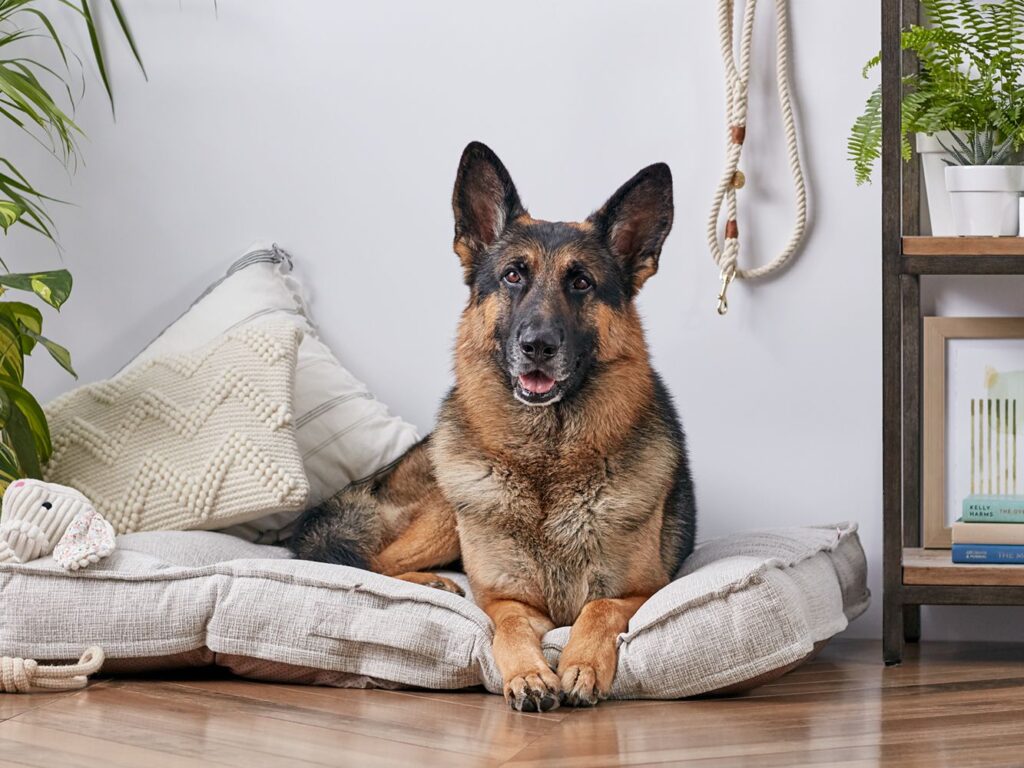Dogs and security in an estate or complex

“Feed it, groom it and love it and it will protect you with its life.” – Andy Lawler, MD, Sentinel Security
Living in an access-controlled estate or complex, with electric fences, guards and sometimes, armed response vehicles, provides residents with a high level of security and peace of mind. But even in these secure environments, there is no guarantee that individual homeowners won’t be subject to criminal intrusions. Security expert, Andy Lawler, explains how and why the humble dog is a great addition to your home security.
For centuries, the relationship between man and dog has always been co-dependent in nature. Dogs, due to their domestication and resultant reduction in their hunting instinct depend on humans to feed and look after them; humans depend on dogs not only for company, but also for protection and in some instances as working dogs, such as those used by persons with disabilities.
In terms of security, the dog has long been considered as the best and most effective security control available to man.
Let us take a moment to look at security control. In security, we talk about five types of risk control. These include administrative control, activity phase control, preventative, detective, and corrective controls.
The administrative control is a high-level control involving acts, laws, regulations, security policies, security-based practice documents and legal guidelines. This is an overriding control that governs the behavior of man in terms of what day may or may not do to protect themselves against illegal acts.
The second control is the activity phase control. The activity phase control finds its origin within the administrative controls and generally forms the physical manifestation of the administrative control in practice. For example, a security company publishes a security policy (administrative control) and out of that policy, a standard working procedure is written to guide the security guards on how to best carry out the security policy to provide an effective security service.
Preventative controls are controls that prevent the loss or harm against humans or property from occurring. For example, access control at estate gates, walls, fences, and other barriers that preventing ease of access for criminals to potential targets.
Preventative measures, however, can fail and in order to detect these failures and correct the situation, the next two controls become of vital importance.
Detective controls are designed to identify a threat or incident before it occurs or as it is busy occurring. Detective controls could take the form of security cameras, alarms or pressure sensors placed in strategic positions in order to inform interested parties of unwarranted criminal presence.
Lastly, we have the corrective control. These controls occur in reaction to the activation of a detective control or in reaction to an incident. These controls include the deployment of an armed response unit, self-defense, the upgrading of physical security vulnerabilities or even, in extreme cases, moving one’s family to a safer neighborhood.
With these controls in mind, and taking into consideration the nature of dogs, we come to the realisation that dogs perform service as a preventative measure, a detective measure, as well as a corrective measure.
Why, you might ask?
The enemy to any criminal is exposure, and in terms of a preventative measures, when a potential criminal sees a dog at the property that he wishes to access illegally, he realises that, should the dog bark, he will be exposed. Thus, hopefully, he moves on to another area in order to carry out his criminal intent. Mixed with this, is the inherent fear that many people have in terms of dogs and the potential injury that could be caused should the dog attack them. This, too, could encourage the criminal to move off to a lesser protected area. Therefore, the dog is an effective preventative measure.
Anyone knowing the nature of dogs will also know just how attentive and protective they can be. When someone strange comes close to the territory that they consider to be their own, dogs generally attempt to ward that person off by barking and performing in an aggressive manner in order to protect the humans that they consider as their pack. This behavior becomes a detective control as the dog becomes an early warning system for potential danger.
Finally, the dog is also a very effective corrective control, and many an unlucky criminal has been exposed to the sharp end of the dog resulting in varying degrees of injury and possibly even death. Many criminals have found themselves breaking Olympic records in attempting to get away from dogs, in terms of both high jump, as well as the 100-meter Sprint.
In conclusion, technology has yet to come up with a better solution to provide protection that covers all three of the critical types of control, namely, preventative detective and corrective control, than the dog. Feed it, groom it and love it and it will protect you with its life.
For more information, contact Andy Lawler, MD of Sentinel Risk Management on 082 953 1594 | andy@sentinelriskmanagement.com
ED’S COMMENT: IT MUST BE NOTED THAT A VICIOUS DOG HAS NO PLACE IN AN ESTATE OR COMPLEX. Any dog that is kept in an estate or complex must be well socialised and not pose any danger to fellow residents.


Sorry, the comment form is closed at this time.